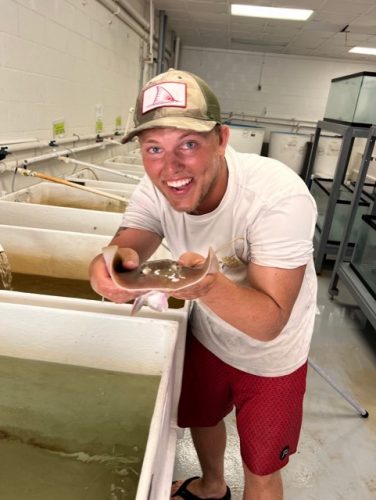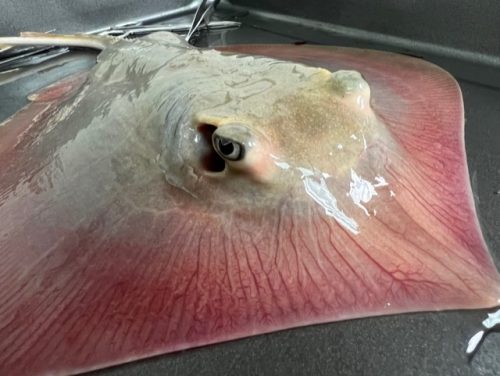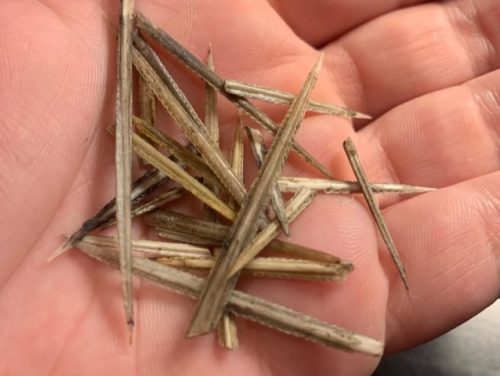Joe Miguez is a masters student at FPSR studying gene expression in stingrays.

1. Where are you from?
I am from a small coastal community near Virginia Beach, Virginia.
2. Why did you want to be a scientist when you grew up?
My early childhood was dominated with a fascination for the outdoors, marine life, and the diversity of life in general. Being a scientist was what I found to be the best and most applicable career choice with this fascination in mind and the endless questions I had about certain organisms and the underlying mechanisms that support the life that surrounds us.
3. How did you come to study sharks/rays?
I came to study sharks and rays by assisting Dr. Dean Grubbs and his lab at Florida State University. My past job experience as a volunteer at the Virginia Aquarium and Marine Science Center and as a charter boat mate out of Rudee Inlet, VA helped me to understand dealing with sharks and rays from surface level and a fishing perspective. I sought to build upon that and expand my experience into the scientific world and my volunteer and Honors thesis work at FSU is what propelled me into truly wanting to study marine life with elasmobranchs being my continued source of interest.
4. What are the current projects you are working on?
Currently, I am working on studying how the environment influences that genetic pathways that underly the process of osmoregulation in both the freshwater and marine populations of the Atlantic stingray, Hypanus sabinus.
5. Why should people care about your work?

The population of Atlantic stingrays that are present in the St. John’s River system of Florida is unique as it is the only population of permanent freshwater elasmobranchs in North America. This local population is poorly documented in terms of fishing pressure and population health as a result of this species moving into a purely freshwater environment. I anticipate that the results from this work will serve as a baseline for comparative studies in other euryhaline elasmobranchs. Understanding the mechanistic basis, or at least proposing mechanisms from gene expression patterns, has implications for the conservation of the Atlantic stingray, as the estuarine environments in which these animals occur are often heavily impacted by anthropogenic change.
6. What is your favorite shark/ray or shark/ray fact and why?
My favorite elasmobranch changes daily but currently my favorite shark is the tasselled wobbegong for its incredible patterns and its “shaggy beard” fringe of dermal tissue leading it incredible camouflage. My favorite ray is the Mekong giant stingray as the species falls in the scope of my research and it one of largest freshwater fish currently known!
